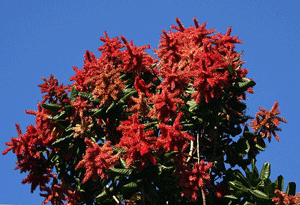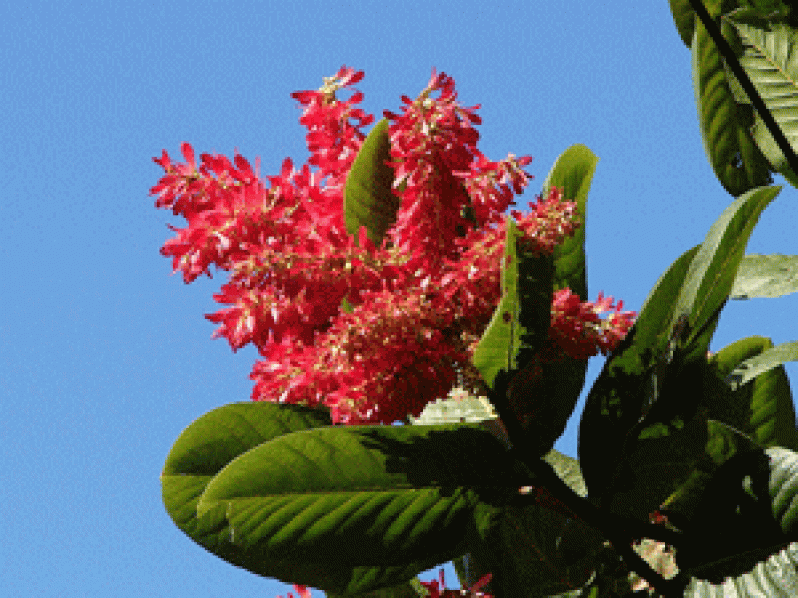The Long John tree shares survival interests with vicious ants
THE Long John tree is scientifically known as the Triplaris Surinamensis. Native to South America, this tree is also known as the Antwood tree or the Mulatto tree.  Called the Long John because of its very slender and graceful form, this tall, columnar, flowering tree, which beautifies its surroundings, is known for its spectacular, long-lasting red flowers, and its brown seeds which have wings. Falling seeds of this tree look like many small helicopters gyrating to earth, and can be carried by the wind for many miles before landing.
Called the Long John because of its very slender and graceful form, this tall, columnar, flowering tree, which beautifies its surroundings, is known for its spectacular, long-lasting red flowers, and its brown seeds which have wings. Falling seeds of this tree look like many small helicopters gyrating to earth, and can be carried by the wind for many miles before landing.
In Suriname, the tree is also called “Dreitin” which reminds one that when it blooms, the dry season is about to start.
The Long John grows rapidly, and can reach a height of more than a hundred feet. The trunk is straight and slightly cracked, with greyish or greyish-brown coloured bark. Leaves are up to 15″ long, 6″ wide, and are very ornamental.
The male flowers are small and white. Red female flowers are in big compound clusters.
The thick, hollow branches are divided in segments.
An interesting biological feature of the Long John is what has been described as its mutually supportive relationship with ants, particularly the vicious species of this insect.
The tree houses ant colonies in its hollowed out stems; and without damaging the tree, the ant colonies serve as protection from herbivores.
It is said that only an inexperienced person would try to cut down a Long John tree, because when that person commences that enterprise, the ants would launch vicious attacks in great numbers in defence of the tree.
Scientists have also discovered that the Long John receives nutrient-rich organic matter from the ants; whilst the ants, besides obtaining suitable sites for their colonies, benefit from food bodies and or extra floral nectar furnished by the tree.
This mutually supportive relationship between plants and insects has been referred to as myrmecophytism, and the Long John is also described as a myrmecophyte plant, meaning that it is a plant that bears specialized structures which allow and/or facilitate the foundation and development of ant colonies.
Long John trees are a common sight as landscape trees along streets and parks in many countries in South America. They proliferate in the Botanical Gardens in Georgetown.
In some countries, the wood of the Long John is used to make boxes and crates, fibreboard, particle board, furniture and furniture components, and for the purposes of joinery; but none of this is possible whilst the large colonies of protective ants inhabit the tree.
In the Green Corner…
SHARE THIS ARTICLE :
Facebook
Twitter
WhatsApp



.jpg)








